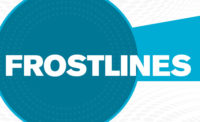“The difference between advertising and personal salesmanship lies largely in personal contact,” wrote Claude Hopkins, in his bookScientific Advertising. “The salesman is there to demand attention. He cannot be ignored. The advertisement can be ignored.
“But the salesman wastes much of this time on prospects whom he can never hope to interest. He cannot pick them out. The advertisement is read only by interested people, who, by their own volition, study what we have to say.”
As Hopkins is quick to point out, the headline is what pulls the print ad together.
“The purpose of a headline is to pick out people you can interest,” wrote Hopkins, who dedicated an entire chapter to headlines and their overall importance in a print advertisement. “You wish to talk to someone in a crowd. So the first thing you say is, ‘Hey there, Bill Jones’ to get the right person’s attention. So it is in an advertisement. What you have will interest certain people only, and for certain reasons. You care only for those people. Then create a headline which will hail those people only.”
Hudson echoed that observation, but with a slightly different twist.
“Look, 80 percent of your ad’s effectiveness, that you’re paying for by the way, is in its headline,” wrote Hudson in an article he authored and placed on his Web site (visit www.hudsonink.com). “A headline is ‘the ad for the ad’ and commands an importance not approached by any other element in your ad. Your company name isn’t a headline. A cartoon of a guy in a truck is not a headline. The ‘oldest, biggest, smallest, newest, fastest, mostest’ anything is not a headline.
“A headline is a strong, clearly stated benefit for the customer. Without one, your ad suffers miserably with all the other losers. With one, you stand out, get read, and get called. Isn’t this why you’re advertising in the first place?”
Examining the headlines inThe NEWS’top ads of 2006, one could deduct that the headline in each winning selection is the major reason – if not, a very solid reason – why each ad gained the collective attention ofNEWSreaders. For instance, Trane’s two-page spread in the March 20,2006 issue had a strong headline (“Does Your Air Conditioning System Circulate It? Or Remove It?”), which worked hand-in-hand with the print ad’s strong images and text. In theNEWSreadership study for that issue, 75 percent of those who responded to the survey/study stated that they remembered seeing that ad.
That is just one example.
SCIENTIFIC ADVERTISING
Hopkins was an “ad man” and copywriter who did his best work in the early part of this century. His classic book,Scientific Advertising, first published in 1923, has been out of print for many years. However, it can be downloaded for free on various Websites. The book contains plenty of insights into the power of a headline.“Headlines on ads are like headlines on news items,” wrote Hopkins. “Nobody reads a whole newspaper. One is interested in financial news, one in political, one in society, one in cookery, one in sports, etc. There are whole pages in any newspaper, which we may never scan at all. Yet other people might turn directly to those pages. We pick out what we wish to read by headlines, and we don’t want those headlines misleading. The writing of headlines is one of the greatest journalistic arts. They either conceal or reveal an interest.”
To prove his point, Hopkins brought out this example.
“Suppose a newspaper article stated that a certain woman was the most beautiful in the city. That article would be of intense interest to that woman and her friends. But neither she nor her friends would ever read it if the headline was ‘Egyptian Psychology.’
“So in advertising. It is commonly said that people do not read advertisements. That is silly, of course. We who spend millions in advertising and watch the returns marvel at the readers we get. Again and again we see 20 percent of all the readers of a newspaper cut out a certain coupon. But people do not read ads for amusement. They don’t read ads that, at a glance, seem to offer nothing interesting. A double-page ad on women’s dresses will not gain a glance from a man. Nor will a shaving cream ad from a woman.
“Always bear these facts in mind,” wrote Hopkins. “People are hurried. The average person worth cultivating has too much to read. They skip three-fourths of the reading matter, which they pay to get. They are not going to read your business talk unless you make it worth their while and let the headline show it.”
GO AFTER PERCENTAGE
In Hopkins’ estimation, people will not be bored in print. It is his experience that people may listen politely at a dinner table to boasts and personalities, life history, etc. But in print, he said, they choose their own companions, their own subjects.“They want to be amused or benefited,” wrote Hopkins. “They want economy, beauty, labor savings, good things to eat and wear. There may be products, which interest them more than anything else in the magazine. But they will never know it unless the headline or picture tells them.”
In the long run, expect to spend more time on writing the headline than the copy, said Hopkins. Some, he said, spend hours in creating just the right headline.
“Often scores of headlines are discarded before the right one is selected,” he wrote. “For the entire return from an ad depends on attracting the right sort of readers. The best of salesmanship has no chance whatever unless we get a hearing. The vast difference in headlines is shown by keyed returns,” which Hopkins advocates.
“The identical ad run with various headlines differs tremendously in its returns,” he pointed out. “It is not uncommon for a change in headlines to multiply returns from five or ten times over.”
He added, “So we compare headlines until we know what sort of appeal pays best. That differs in every line, of course. The writer has before him keyed returns on nearly two thousand headlines used on a single product. The story in these ads is nearly identical. But the returns vary enormously, due to the headlines.”
The key here, said Hopkins, is to learn what type of headline has the most widespread appeal.
“The product has many uses. It fosters beauty. It prevents disease. It aides daintiness and cleanliness. We learn to exactness which quality most of our readers seek. This does not mean we neglect the others. One sort of appeal may bring half the returns of another, yet be important enough to be profitable. We overlook no field that pays. But we know what proportion of our ads should, in the headline, attract any certain class.”
For this same reason, Hopkins advocates employing a vast variety of ads.
“If we are using 20 magazines, we may use 20 separate ads,” he wrote. “This because circulation’s overlap, and because a considerable percentage of people are attracted by each of several forms of approach. We wish to reach them all.”
Hopkins turned to another example to prove his point. He said on a soap advertisement, one headline could be “Keep Clean,” which might attract a very small percentage.
“It is too commonplace,” explained Hopkins. “So might the headline, ‘No animal fat.’ People may not care much about that. The headline ‘It floats’ might prove interesting. But a headline referring to beauty or complexion might attract many times as many.”
Hopkins concluded by asking one and all not to create an ad for the masses. Rather, among those masses is a percentage, small or large, which one should hope to interest.
“Go after that percentage and try to strike the chord that responds,” Hopkins encouraged. “If you are advertising corsets, men and children don’t interest you. If you are advertising cigars, you have no use for non-smokers. Razors won’t attract women, rouge will not interest men.
“Don’t think that those millions will read your ads to find out if your product interests. They will decide at a glance - by your headline or your pictures. Address the people you seek, and them only.”
For a free downloadable copy ofScientific Advertising,visit www.ezau.com/ebooks/scientific.html.
Publication date:12/11/2006









